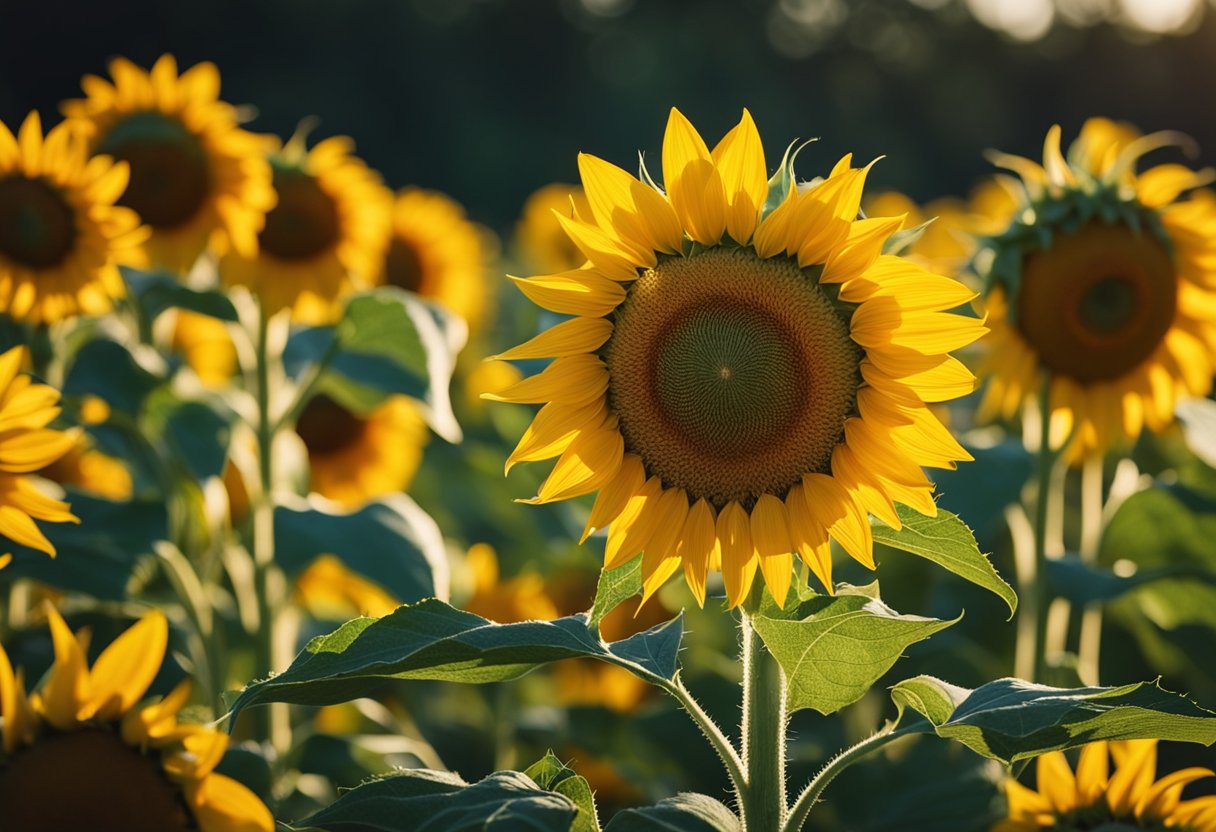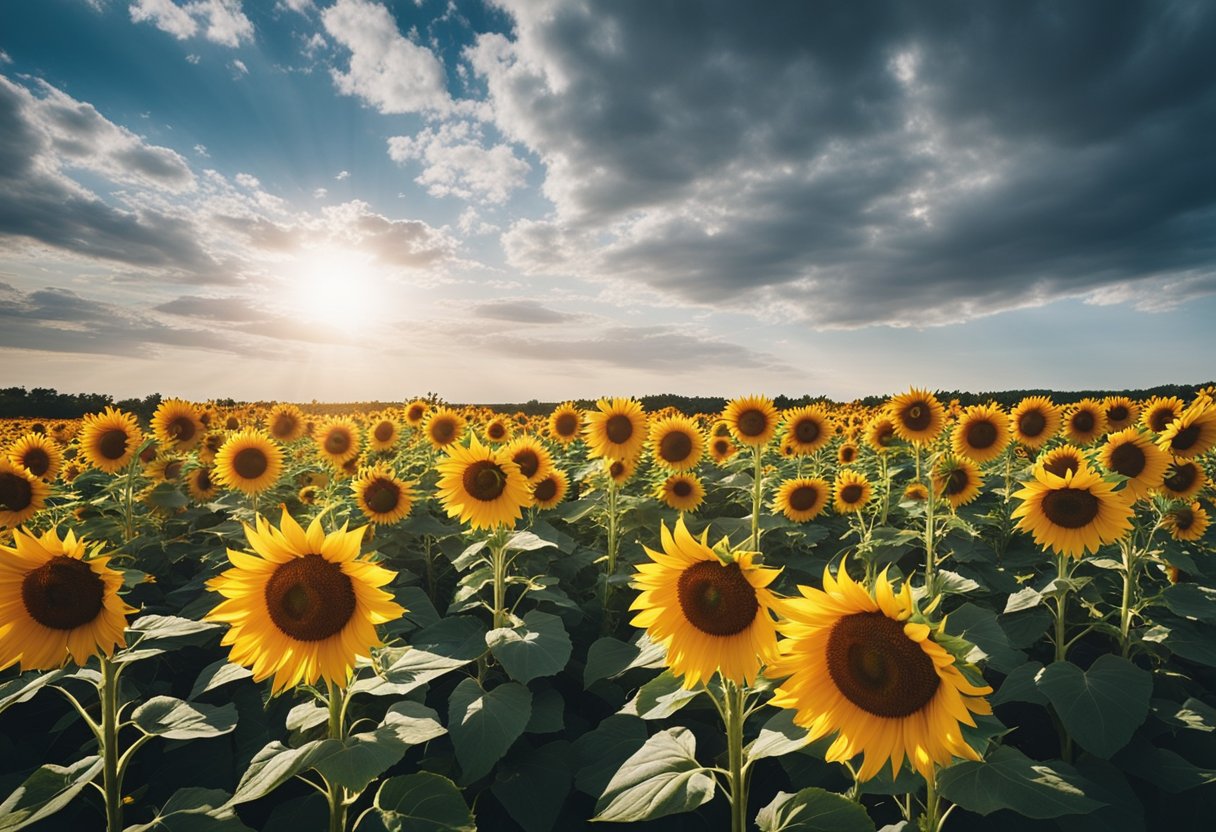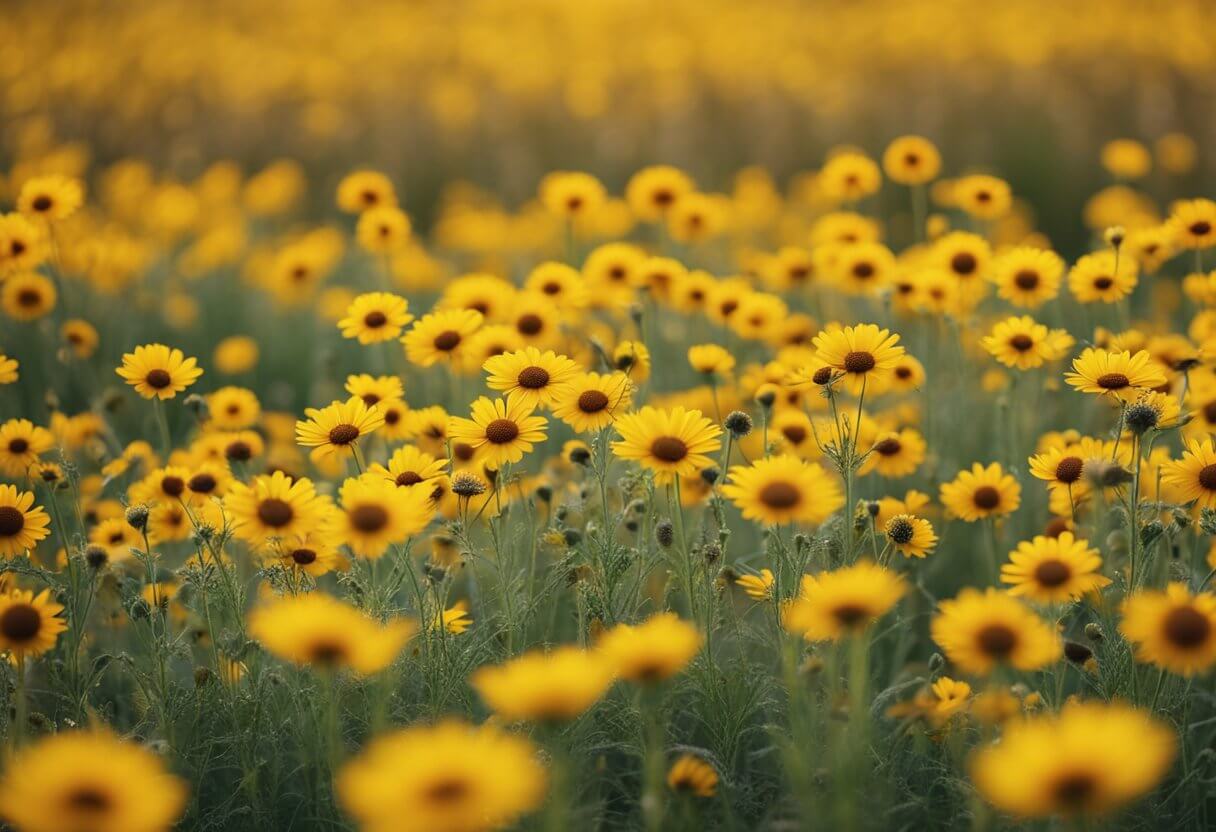When are Sunflowers in Season?
Sunflowers are a popular flower known for their bright yellow petals and brown centers. They are often grown in gardens and fields for their beauty and as a source of food for birds and other wildlife. In this article, we will explore when sunflowers are in season across the United States.
Sunflowers typically bloom from mid-summer to early fall, depending on the location and climate. The exact timing of their bloom can vary depending on factors such as temperature, rainfall, and soil conditions. In general, sunflowers are in season from July to October in most parts of the United States.
Understanding the bloom cycle of sunflowers can help you plan your garden or visit to a sunflower field. From seed planting to full bloom, a sunflower’s life cycle can take anywhere from 80 to 120 days. Knowing when to plant your sunflower seeds and when to expect them to bloom can help you make the most of your sunflower season.
Season Overview
Sunflowers are a popular summer flower that can be found in many parts of the world. In the United States, sunflowers typically bloom from late summer to early fall, depending on the region. The exact timing of sunflower season can vary depending on factors such as climate, weather conditions, and planting schedules.
If you’re planning on growing sunflowers, it’s important to know when they will be in season in your area. Sunflowers prefer warm weather and need plenty of sunlight to thrive. They also require well-drained soil and regular watering to stay healthy.
In general, sunflowers are in season from late June to mid-September in most parts of the United States. However, the exact timing of sunflower season can vary depending on where you live. For example, in warmer regions like the southern United States, sunflowers may bloom earlier in the summer, while in cooler regions like the northern United States, sunflowers may bloom later in the season.
If you’re planning on visiting a sunflower field to see the flowers in bloom, it’s a good idea to check with local farmers or garden centers to find out when the flowers will be at their peak. Many sunflower fields also offer guided tours and other events during the peak season, so be sure to check for any upcoming events in your area.
Planting Period
Sunflowers are a summer flower, and they typically bloom from early summer to late August. The best time to plant sunflowers is around two to three weeks after the last expected frost date for your growing zone. Wait until the soil temperature is between 50 to 60 degrees to direct sow sunflowers. In the southern United States, this can happen as soon as early March, or as late as mid-June in regions like New England or the Upper Midwest.
When planting sunflowers, choose a spot that gets six to eight hours of direct sun per day. Sunflowers are sun worshipers and grow best in full sun. If you’re planting sunflowers from seed, plant them about 1 inch deep and 6 inches apart. If you’re planting multiple rows, space the rows about 30 inches apart.
Sunflowers are relatively easy to grow and don’t require a lot of maintenance. Once the seeds are planted, water them regularly until they germinate. After that, sunflowers don’t need much water, and overwatering can actually harm them.
As the sunflowers grow, you may need to stake them to keep them upright. This is especially true if you’re growing a larger variety of sunflower. You can use bamboo stakes or other types of support to keep the sunflowers from falling over.
In summary, the best time to plant sunflowers is in the summer, around two to three weeks after the last expected frost date for your growing zone. Choose a spot that gets six to eight hours of direct sun per day, plant the seeds about 1 inch deep and 6 inches apart, and water them regularly until they germinate. As they grow, stake them to keep them upright.

Blooming Period
Annual sunflowers typically bloom from the summer into the fall, with continuous blooms possible by sowing new plants every few weeks. Perennial sunflowers, on the other hand, bloom for eight to twelve weeks, with some starting in July and others not finishing until October. These tall flowers are pollinator magnets, attracting bees, butterflies, and other insects to their nectar-rich centers.
The blooming period for sunflowers can vary depending on the climate and growing conditions in your area. In temperate climates, peak sunflower season is typically late August to early September, with longer-season varieties and later-planted crops blooming into September. However, in warmer regions, sunflowers may bloom earlier in the summer and continue blooming into the fall.
Overall, if you’re looking to enjoy the beauty of sunflowers in full bloom, it’s best to plant them in the spring or early summer and ensure they receive plenty of sunlight and water throughout the growing season. With proper care and attention, you can enjoy these vibrant flowers for weeks on end.

Common Varieties and Their Seasons
Sunflowers come in a wide range of varieties, each with its own unique characteristics and blooming season. Here are some of the most common sunflower varieties and when you can expect them to bloom:
Autumn Beauty: This variety of sunflower blooms in late summer to early fall, typically from August to October. It features a mix of colors, including shades of yellow, orange, and red.
Moulin Rouge: Moulin Rouge is a striking variety of sunflower that blooms in mid-summer, typically from July to August. It features deep red petals and a dark center disk.
Russian Giant: As the name suggests, Russian Giant is a large variety of sunflower that can grow up to 14 feet tall. It typically blooms in mid-summer, from July to August.
Lemon Queen: This variety of sunflower is known for its pale yellow petals and dark center disk. It typically blooms in mid-summer, from July to August.
Teddy Bear: Teddy Bear is a compact variety of sunflower that grows to be about 2-3 feet tall. It blooms in mid-summer, typically from July to August, and features fluffy, golden-yellow petals.
Italian White: Italian White is a unique variety of sunflower that features creamy white petals and a dark center disk. It typically blooms in mid-summer, from July to August.
Velvet Queen: Velvet Queen is a stunning variety of sunflower that features deep red petals and a dark center disk. It typically blooms in mid-summer, from July to August.
Sunflower Seasonality Across the US
When it comes to sunflower season, timing can vary depending on the location. In some states, sunflowers bloom as early as July, while in others, they may not reach peak bloom until September. Here is a table of the seasonality of sunflowers in each of the 50 states in the US:
| State | Sunflower Season |
|---|---|
| Alabama | June – August |
| Alaska | July – August |
| Arizona | June – September |
| Arkansas | July – September |
| California | June – September |
| Colorado | July – September |
| Connecticut | August – September |
| Delaware | August – September |
| Florida | June – September |
| Georgia | June – August |
| Hawaii | July – September |
| Idaho | July – September |
| Illinois | July – August |
| Indiana | July – September |
| Iowa | July – August |
| Kansas | July – September |
| Kentucky | July – September |
| Louisiana | June – August |
| Maine | August – September |
| Maryland | August – September |
| Massachusetts | August – September |
| Michigan | July – August |
| Minnesota | July – August |
| Mississippi | June – August |
| Missouri | July – September |
| Montana | July – August |
| Nebraska | July – September |
| Nevada | July – September |
| New Hampshire | August – September |
| New Jersey | August – September |
| New Mexico | July – September |
| New York | August – September |
| North Carolina | June – August |
| North Dakota | July – August |
| Ohio | July – September |
| Oklahoma | July – September |
| Oregon | July – September |
| Pennsylvania | August – September |
| Rhode Island | August – September |
| South Carolina | June – August |
| South Dakota | July – August |
| Tennessee | June – August |
| Texas | June – September |
| Utah | July – September |
| Vermont | August – September |
| Virginia | August – September |
| Washington | July – September |
| West Virginia | August – September |
| Wisconsin | July – August |
| Wyoming | July – August |
Note that these are approximate time frames and can vary depending on weather and other environmental factors. It’s always a good idea to check with local farms or gardens for the most accurate information on sunflower season in your area.
